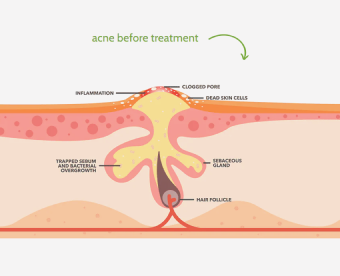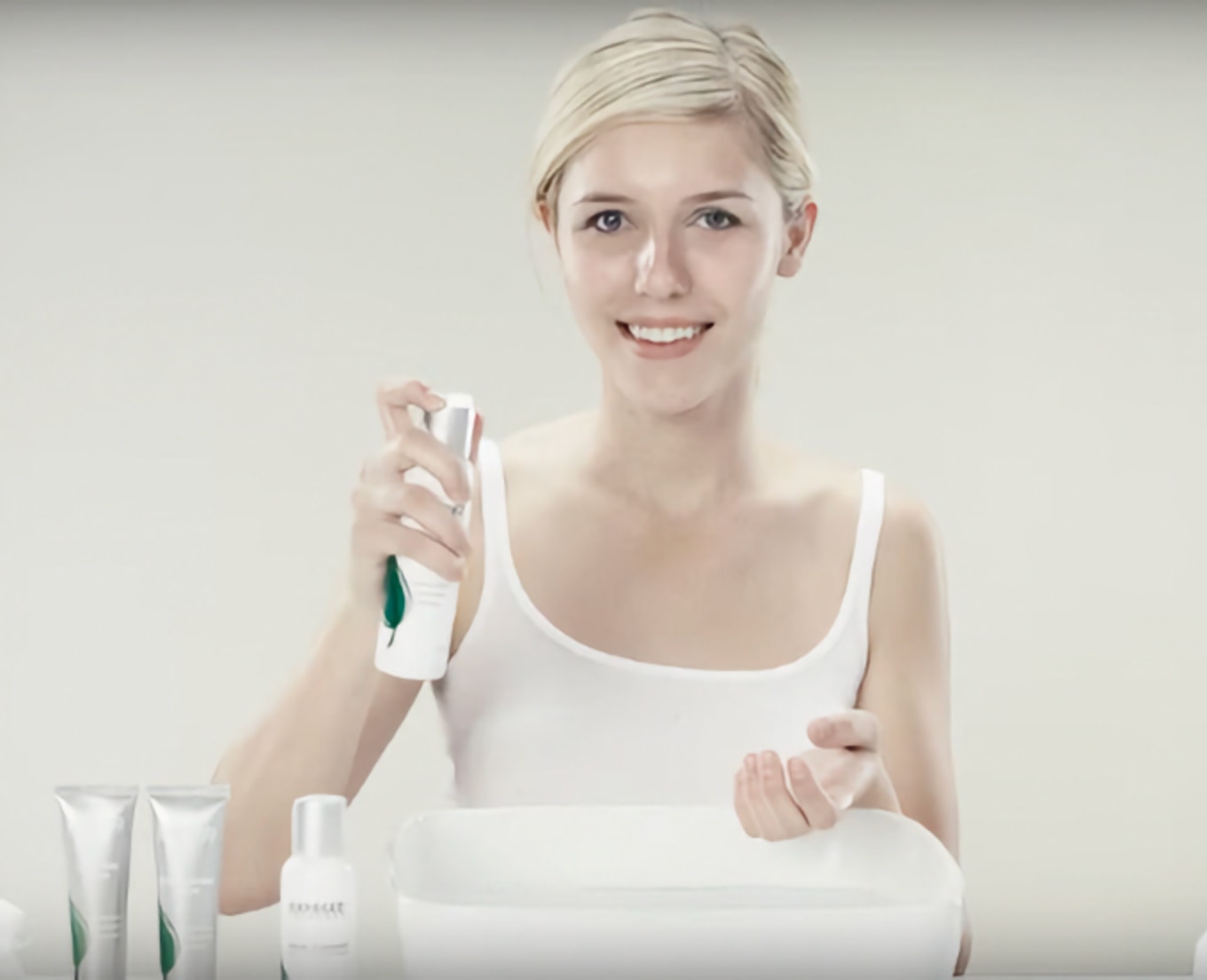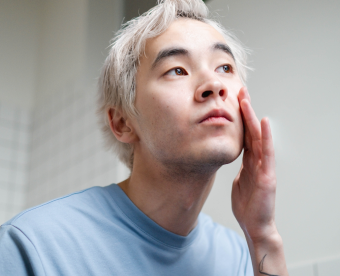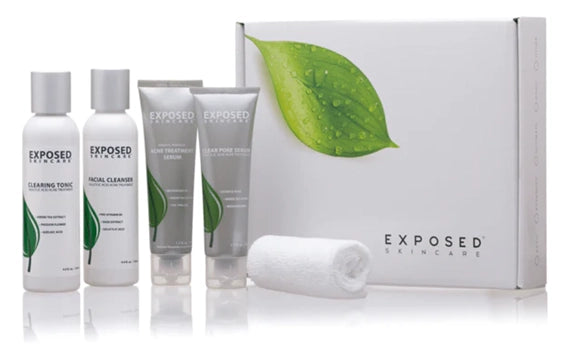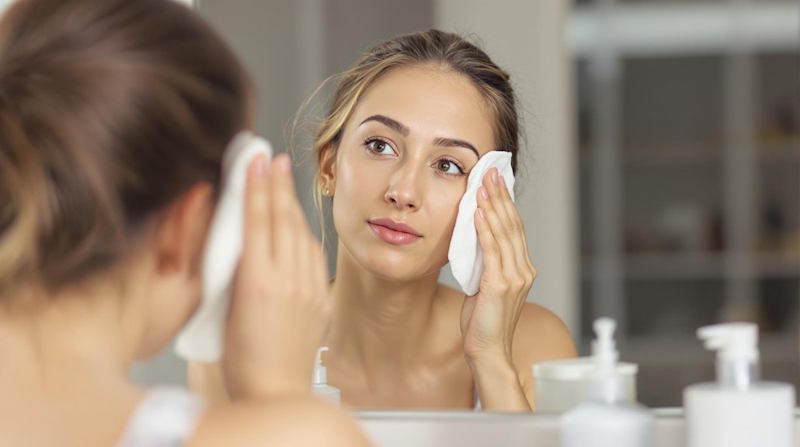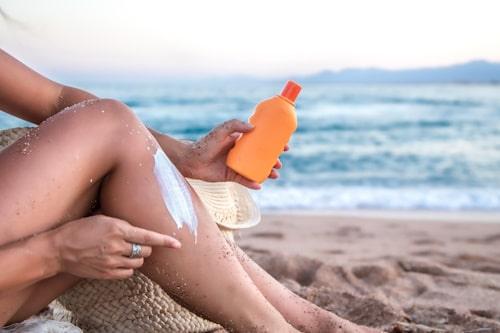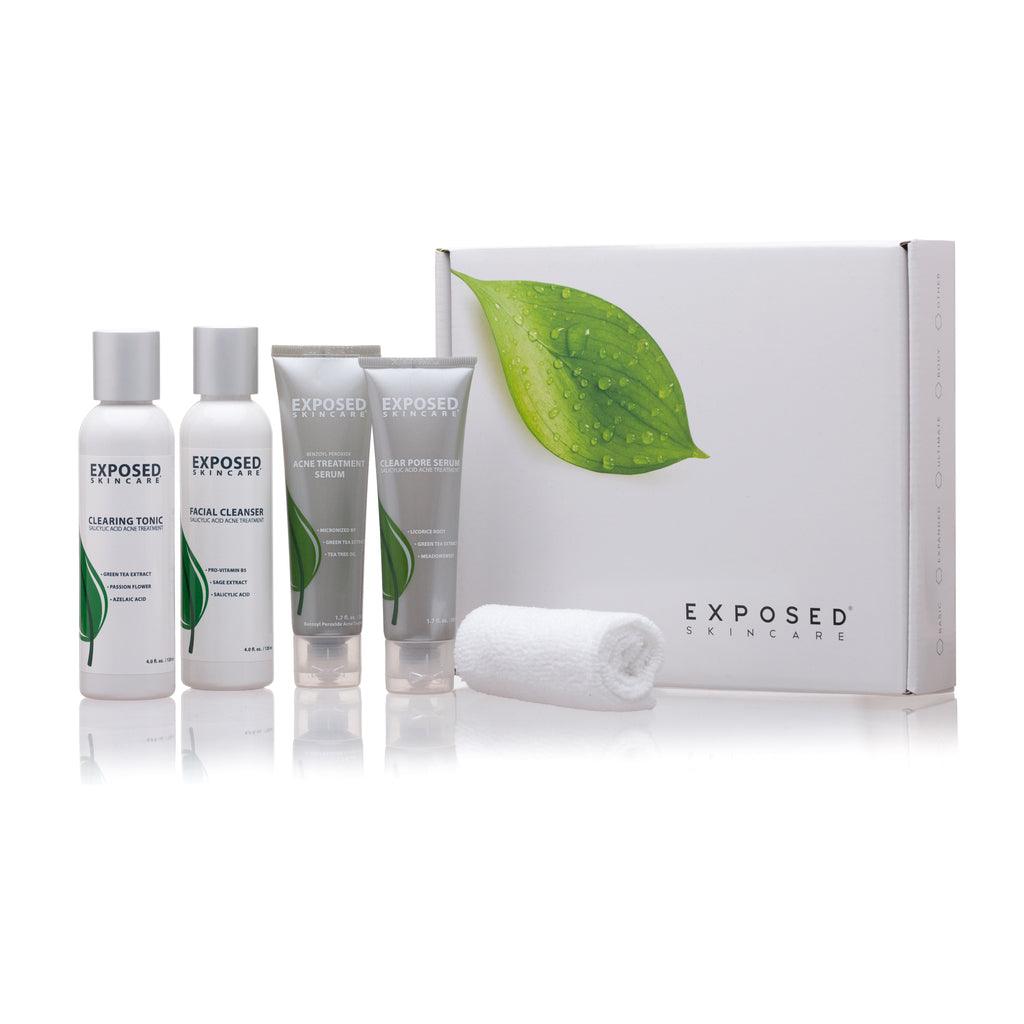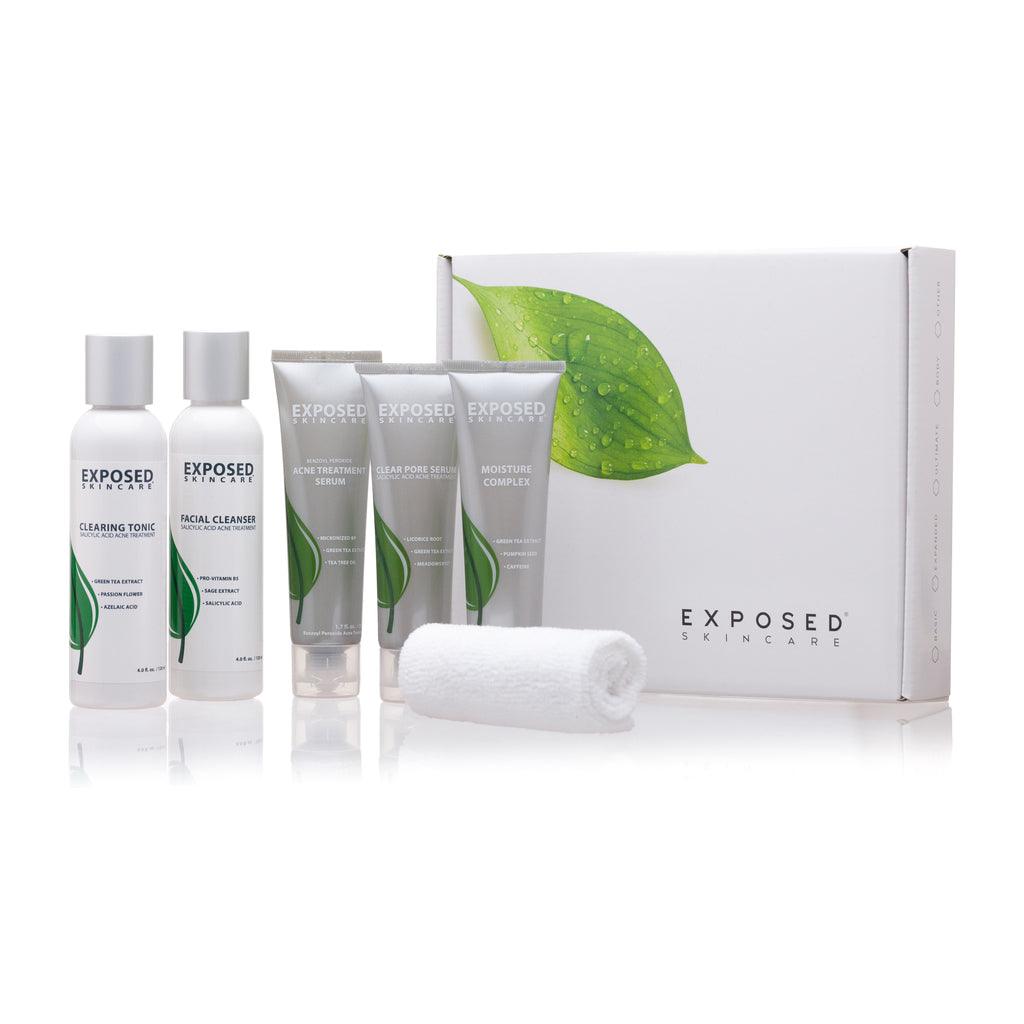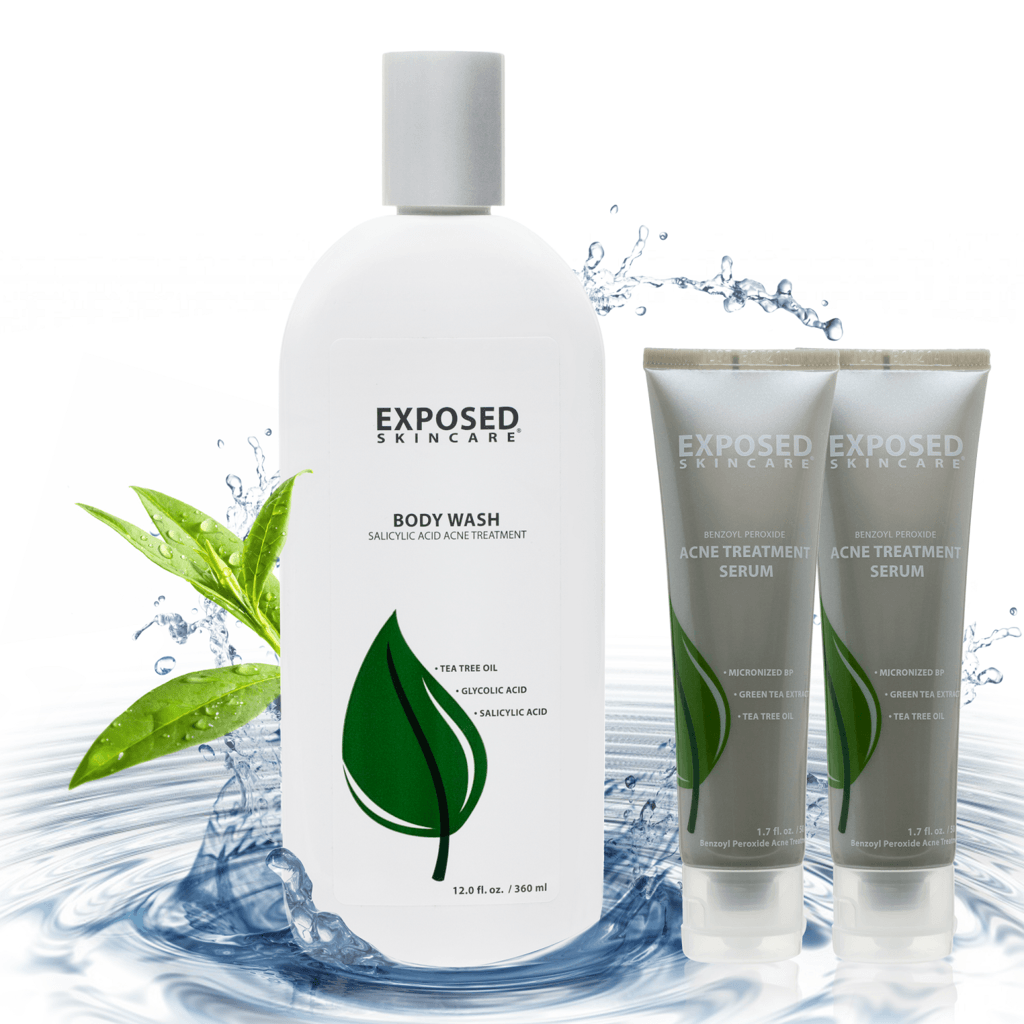Acne often appears when it is least expected. Among the different types of acne, cystic acne is the most troublesome, creating an unpleasant and painful experience. In the quest for a quick and easy solution, the spotlight often falls on a small, seemingly magical product—the pimple patch.
Pimple patches, especially hydrocolloid ones, have gained fame for their ability to absorb excess fluid and help reduce inflammation and redness. Many people believe these patches work best on surface-level blemishes like whiteheads, and their success has led to a widespread belief that they may also help treat cystic acne.
However, as tempting as applying a hydrocolloid patch on that new pimple may be, it may not be the ideal choice for cystic acne. In this blog post, we dissect the reality of using a pimple patch for cystic acne and present six reasons why this approach may not be as effective as it seems.
Also read: How to choose the best acne treatment
Biggest Take-Aways:
-
Pimple patches may help reduce inflammation and absorb excess fluid for surface-level acne, but they aren't fully effective for cystic acne due to their deeper root causes.
-
Over-reliance on patches could lead to skin irritation, a false sense of security, and potentially costly recurring expenses.
-
A balanced, comprehensive skincare routine is vital for treating acne effectively, rather than depending solely on patches.
-
Products like Exposed Skin Care offer a versatile solution that can complement patches, effectively controlling excess oil and reducing inflammation while maintaining skin hydration.

1. Pimple Patches and Cystic Acne: A Mismatched Duo
The Nature of Cystic Acne
Understanding the type of acne is crucial in selecting the right solution. Cystic acne is a severe acne type characterized by painful, inflamed cysts buried deeper underneath the skin. These cysts result from an overproduction of oil, dead skin cells, and bacteria clogging the pores. Cystic acne is stubborn. Unlike surface-level zits, it requires more than a surface-level treatment.
How Pimple Patches Differ
Pimple patches, such as hydrocolloid bandages, are made using hydrocolloid gel that can absorb fluid from the pimple and turn white. They work best on acne blemishes close to the skin's surface, like whiteheads or minor zits. However, patches differ in their ability to treat cystic acne, which lies deeper in the skin. Pimple patches aren’t designed to reach those depths and are less effective in treating cystic acne.
2. Ingredient Limitations of Pimple Patches
Hydrocolloid Patch: Absorption, Not Action
Basic hydrocolloid pimple patches are designed to absorb excess fluid from the pimple and reduce inflammation. They can also help prevent picking your acne. While this absorption process helps shrink pimples and reduces redness on the surface, it does not necessarily treat the underlying causes of cystic acne.

Active Ingredients in Pimple Patches
Some pimple patches include active ingredients like salicylic acid, benzoyl peroxide, and tea tree oil. Some products contains salicylic acid and niacinamide (Vitamin B3), while other acne patches contain tea tree oil and hyaluronic acid to hydrate the skin.
These acne-fighting ingredients are beneficial in fighting acne, but their quantity in patches is often insufficient to treat severe acne types. Also, these ingredients must stay on the skin for at least six to eight hours to work, and their effectiveness can be limited if the patch falls off during sleep or daily activities.
3. Lack of Comprehensive Skincare
A pimple patch for cystic acne might help absorb excess oil and reduce inflammation to some extent. Still, they are not a comprehensive solution. Skincare should be a holistic process, focusing on cleansing, toning, and moisturizing routines. Relying solely on pimple patches might not address the root causes of cystic acne, such as hormonal imbalances or bacteria buildup. Hence, including these patches as part of your skincare routine is vital, rather than the only line of defense.
4. Possibility of Skin Irritation
While pimple patches work wonders for some, others might experience sensitive skin reactions. Some patches may contain ingredients like salicylic acid or tea tree oil, which might be too strong for sensitive skin and cause redness, dryness, or peeling. Before you apply the patch, it's crucial to understand what's in it and how your skin might react. Remember that skin irritation can worsen the breakout and prolong the healing process.

5. The False Sense of Security
Pimple patches often provide a false sense of security. Once you put the patch on a pimple, it's easy to feel like you're actively fighting your acne. However, they’re also potentially enabling the continuation of bad habits like touching your face or not cleaning your skin thoroughly. Furthermore, patches only provide a temporary solution, and without addressing the underlying causes of acne, you might find yourself in a continuous cycle of breakouts.
6. Cost Factor
While many consider pimple patches as a quick-fix solution, the cost factor can add up over time, especially for cystic acne that tends to be persistent and widespread. Pimple patches are typically sold in small quantities, and their price per use can be significantly higher than traditional acne-fighting solutions, especially if you need multiple patches daily.
The Power of Exposed Skin Care: An Effective Strategy for Acne Management
Acne is more than just a cosmetic concern; it's a complex issue that demands a multifaceted approach to effective management. Enter Exposed Skin Care, a comprehensive solution that's been praised by many individuals battling stubborn acne.
Here are some key benefits of using Exposed Skin Care to manage acne:
- Combats Excess Oil: It effectively controls excess oil, a primary cause behind those unsightly acne spots.
- Anti-inflammatory: The products in the Exposed Skin Care line contain anti-inflammatory properties that help reduce inflammation, a godsend when dealing with painful cystic pimples.
- Hydrating: Unlike many acne treatments, Exposed Skin Care doesn't excessively dry out your skin. It maintains a balance, making it a reliable part of your skincare routine.
- Versatile: The line offers a range of products, from the best pimple patches to acne healing dots and acne cover patches. "The patches" from Exposed Skin Care are a perfect example - they're made using hydrocolloid, ideal for surface-level zits.
Remember, treating your acne is a marathon, not a sprint. Add Exposed Skin Care to your arsenal, and you're one step closer to winning the race.
Conclusion
Understanding the tools at your disposal is essential in acne management. Whether it's a zit or a painful cystic pimple, the right approach can make all the difference. While pimple patches may offer some relief, it's crucial to recognize that they are not a one-size-fits-all solution.
These patches, made using hydrocolloids, are ideal for surface-level acne but might fall short when dealing with more severe cases. Understanding this can prevent unrealistic expectations and potential disappointment.
Adding products like Exposed Skin Care to your skincare routine could complement the effects of these patches and provide a more comprehensive treatment. This multi-pronged approach helps to reduce inflammation and can promote better skin health over time.
As we've learned, managing acne isn't just about using a hydrocolloid acne patch or another single product. It's about finding a combination that works for your unique skin type. By integrating these patches and other treatments into your skincare routine, you may earn the clear, healthy skin you've always wanted.
FAQs
Q1: Are hydrocolloid pimple patches useful for cystic acne?
Hydrocolloid patches are designed to absorb excess fluid from the pimple and reduce inflammation. While they might help with surface symptoms of cystic acne, they are less effective in treating the deep-rooted inflammation associated with this severe acne.
Q2: What are the active ingredients in pimple patches?
Different brands of pimple patches contain various active ingredients. Some common ones are salicylic acid, benzoyl peroxide, and tea tree oil. Some patches also contain hyaluronic acid to hydrate the skin or niacinamide to reduce inflammation.
Q3: How long should I leave a pimple patch on?
For the best results, leaving a pimple patch on for at least six to eight hours is recommended. This time allows the active ingredients in the patch to work on the pimple.
Q4: Can pimple patches irritate the skin?
Some people might experience skin irritation due to the ingredients in pimple patches, especially if they have sensitive skin. If you notice any redness, dryness, or peeling after using a pimple patch, it might be best to discontinue its use and opt for a gentler solution.
Q5: Can pimple patches replace my skincare routine?
While pimple patches can help address surface-level pimples, they should not replace a comprehensive skincare routine. Regular cleansing, toning, and moisturizing are essential for maintaining skin health and preventing breakouts.
Q6: Are pimple patches expensive?
The cost of pimple patches can vary depending on the brand and the number of patches in a pack. However, since patches are a single-use product and you might need multiple patches daily, the cost can add up over time, making them a relatively expensive solution for persistent cystic acne.

